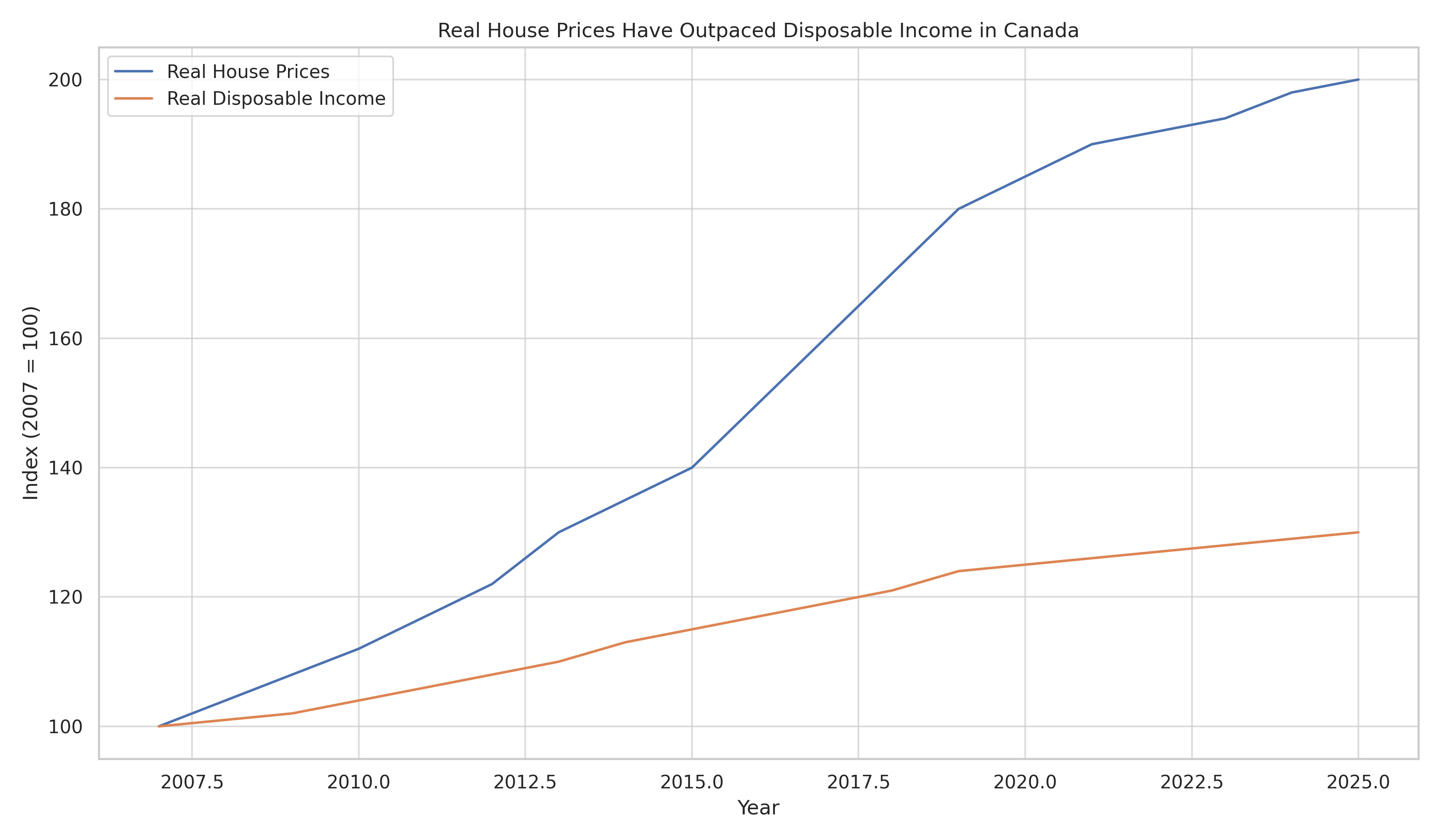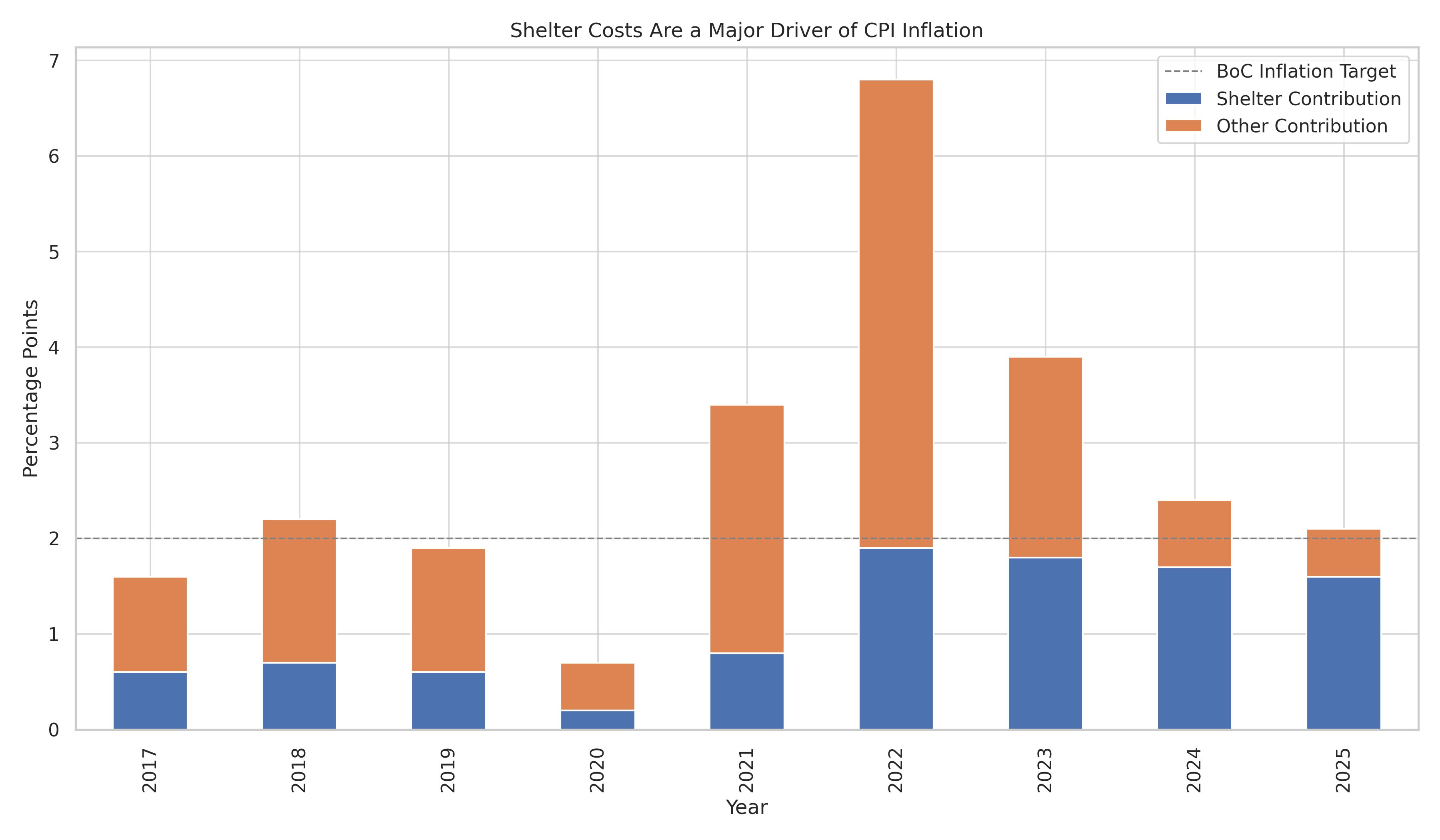Housing strain and interprovincial trade barriers could deepen slowdown, OECD report warns

Housing affordability has deteriorated nationwide as house prices and rents have outpaced income growth.
OECD data show that real house prices in Canada have risen nearly 60 percent more than real disposable income since the Global Financial Crisis.
This dynamic continues to be a dominant inflationary pressure, even as interest rates ease and inflation trends back to target.
Shelter accounts for 29 percent of the Canadian CPI basket and has consistently added 1.5 to 2 percentage points to headline inflation since 2021.
Despite recent policy rate cuts by the Bank of Canada, real estate-related price pressures remain elevated. Rents rose 6.3 percent in 2023 and 7.9 percent in 2024, outpacing average earnings growth.
Vacancy rates, particularly in major cities, remain well below historical norms.


Source: OECD’s 2025 Economic Survey of Canada
According to the OECD, approximately 35 percent of low-income households in Canada are cost-burdened by shelter expenses, spending more than 40 percent of their disposable income on housing.
The affordable rental supply is nearly exhausted in cities like Vancouver and Toronto.
Over two-thirds of purpose-built rentals were constructed before 1980, and recent construction has not kept pace with demand—particularly as immigration levels surged in 2023.
Federal measures such as the Housing Accelerator Fund and new tax incentives aim to increase supply, but the OECD warns the policy mix remains heavily weighted toward homeownership supports.
It calls for enhanced rental supply, reform of zoning laws, faster permitting, and targeted labour market support in construction.

Source: OECD’s 2025 Economic Survey of Canada
Canada’s real GDP per capita remains below pre-pandemic levels, weighed down by weak business investment and limited gains in labour productivity.
Investment per worker has not kept pace with the expansion of the labour force, which surged following record immigration inflows.
OECD modelling estimates long-term GDP gains of up to 16 percent could be unlocked through structural reforms targeting R&D, labour market participation, internal trade, and regulatory efficiency.
The OECD also highlights under-utilised workforce potential.
Women remain underrepresented in high-productivity sectors and leadership roles, while immigrant skill mismatches continue to limit productivity gains.
Proposals include equal pay enforcement, affordable childcare, and harmonised credential recognition.
Ongoing trade tensions with the US, Canada’s top trading partner, have raised economic uncertainty.
With over 75 percent of Canadian goods exports going to the US, new tariffs could reduce Canadian GDP by up to 2.2 percent by the end of 2026, based on OECD and Yale Budget Lab estimates.
While commodity exports remain strong, non-resource sectors continue to lose market share.



